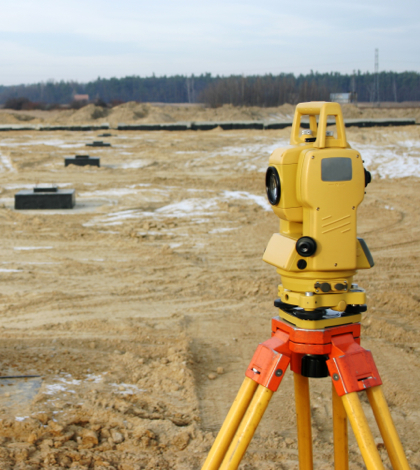The World Logistics Center, proposed for the city’s east side, would cover 40 million square feet at buildout, dwarfing any other industrial project in the region. The logistics development is either a major economic boost for the city or a catalyst for more traffic, noise and pollution, depending on which side of the issue you’re on.
How large is the proposed World Logistics Center in Moreno Valley?
About the size of seven hundred football fields, which is large enough to transform the entire city, says Iddo Benzeevi, president and chief executive officer of Highland Fairview in Moreno Valley, the project’s developer.
World Logistics Center would create about 20,000 jobs and pump millions of dollars into the local economy, while costing an estimated $3 billion to build over 10 years or so, Benzeevi said
Benzeevi was citing data from several economic impact studies and the city’s environmental impact report. He noted that those estimates, parsed out over the course of a decade, could end up being low.
“We’re in this for the long-term,” said Benzeevi, whose company has already developed several large logistics operations in the Inland Empire, including the 1.8 million-square-foot Skechers project in Moreno Valley. “If we go about this the right way, and we do it correctly, there’s an opportunity to do something great for the city. We can create something that will have a lasting impact.”
Its critics argue that the World Logistics Center’s impact would be more than economic. They maintain that the project is so large it would create more traffic, noise and pollution in a city already overloaded with mega-industrial parks.
It’s so big that even the City Council, which ordinarily decides the fate of any proposed business, might not touch it.
Last month, Councilman Jeff Giba suggested that the mega industrial park that would be built on the east end of the city be decided by city voters and not by a vote of the council or the planning commission.
Given its size – 40.6 million square feet – and the amount of concern it has generated from residents worried about the environmental damage it could cause, the council might allow World Logistics Center to be decided at the ballot box, Giba said during the May 19 council meeting.
Giba’s fellow council members took no action on his suggestion, but did agree to discuss the matter at their June 9 meeting.
Two days later, the planning commission is scheduled to hold the city’s first official public hearing on Highland Fairview’s development application.
“I think there’s an understanding that industrial development is appropriate for that part of the city,” said Richard Sandzimier, a planning official with Moreno Valley who began working for Moreno Valley last September. “But the planning commission meeting will be important, because it will be the first time we get a sense of what people in city hall think of this project.”
The idea for World Logistics Center originated with a study Moreno Valley conducted regarding its east side and what development could generate the largest economic impact there.
When the answer came back “logistics,” city officials approached Benzeevi, a developer of large industrial projects who has donated heavily over the years to local political campaigns.
“They contacted us,” said Benzeevi, who has declared that logistics is “the new manufacturing” in the Inland Empire economy, meaning the sector most likely to create high-paying jobs. “They asked us if we could come up with a master plan. World Logistics Center is a result of that plan.”
Three years ago, after conducting its own research, Highland Fairview began negotiating a development agreement with the city.
“We liked the idea right away,’ Benzeevi said. “By then we were past the worst part of the recession, and the idea to put logistics in that part of the city was clearly based on fact. It was based on what was going on in the economy at the time.”
Two years ago, the council approved an economic development plan that listed as one of its top priorities reaching a development agreement with Highland Fairview. That agreement would allow for building the public infrastructure needed to develop World Logistics Center.
The agreement did not state what it would cost to build that infrastructure – streets, sidewalks, water, lighting, sewers, – or who would pay for which projects. One proposal reportedly called for the city to pick up 25 percent of the tab.
World Logistics Center will be built on open space bordered by the 60 Freeway to the north, the San Jacinto Wildlife Preserve to the south, Gillman Springs Road to the east and Redlands Boulevard to the west. The project will be built in phases, with the economy to determine the timing and size of each phase.
“A 10 to 20-year buildout is a reasonable estimate for a project this size,” Benzeevi said. “You’re going to have several up and down markets in 20 years, so it’s difficult to say how many phases there will be. The important thing is to keep building during a down cycle, which we should be able to do.”
The latest dispute surrounding World Logistics Center happened last month, when it was reported that Highland Fairview – which is currently about $140 million in debt – has asked the city to pay more than $100 million to help build the infrastructure needed for the project.
Highland Fairview has made no such request, and both sides are still trying to determine the final infrastructure cost, Benzeevi said.
“We’ve never asked the city to pay $100 million,” said Benzeevi, who said Highland Fairview will “put up our fair share” of the infrastructure costs. “We know the city is in no position to put up that kind of money. We’re not sure what they’re going to provide.”
Whatever its cost, World Logistics Center will be a substantial economic boost to the city, said Jordan Levine, economist and director of economic research with Beacon Economics in Los Angeles.
The construction phase alone should generate several hundred million dollars in economic activity, mostly in the number of jobs it creates, said Levine, whose firm did an economic impact report on the project for Moreno Valley.
“Now it’s up to the city to balance the benefits with the costs,” Levine said. “Anything this big is potentially a big game-changer. It can bring a lot of upheaval. Moreno Valley has to decide if it’s worth it.”
 IE Business Daily Business news for the Inland Empire.
IE Business Daily Business news for the Inland Empire.


